-
Cyberattack on Ukraine grid: here’s how it worked and perhaps why it was done
On 23 December 2015, two days before Christmas, the power grid in the Ivano-Frankivsk region of Ukraine went down for a reported six hours, leaving about half the homes in the region with a population of 1.4 million without power. Because of its success, the incident has sent shock waves through cybersecurity circles. Could this happen in the West? In short, yes. This incident underscores the need for diligence and the increased effort in cybersecurity that we are seeing in the government and private sectors. The continuously increasing dependence on the power grid is driving the need for cybersecurity to be part of the design of all new systems.
-
-
Sandia Labs playing a leading role in grid modernization

Sandia National Laboratories is leading the Security and Resilience area of the Department of Energy’s (DOE) Grid Modernization Laboratory Consortium (GMLC), saying it is bringing its research capability in grid modernization to help the nation modernize its power grid. The consortium includes scientists and engineers from across fourteen DOE national labs and dozens of industry, academic, and state and local government partners, aligned into six technical areas.
-
-
Protecting drinking water
We place high demands on the quality of our drinking water. If pathogens or toxic substances found their way into the piping system, many people could become infected or injured very quickly. This is why this risk must be kept low. To do this, experts have developed technologies for a comprehensive monitoring, early warning and emergency management system.
-
-
Freshwater vulnerability threatens developing nations' stability
Many nations and regions already facing uncertain political futures must contend with a growing threat to stabilization: freshwater vulnerability. An analysis of 119 low-income countries finds common challenges that could inform broad solutions.
-
-
With plutonium-238 sample, ORNL restores U.S. capability dormant for nearly thirty years
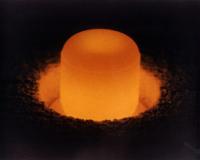
With the production of fifty grams of plutonium-238, researchers at the Department of Energy’s Oak Ridge National Laboratory have restored a U.S. capability dormant for nearly thirty years and set the course to provide power for NASA and other missions. There are currently only thirty-five kilograms, or about seventy-seven pounds, of plutonium-238 set aside for NASA missions, and only about half of this supply meets power specifications. This is only sufficient to power two to three proposed NASA missions through the middle of the 2020s.
-
-
Global learning required to prevent carbon capture, storage from being abandoned
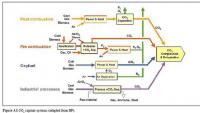
Governments should not be abandoning carbon capture and storage, argues a Cambridge researcher, as it is the only realistic way of dramatically reducing carbon emissions. Instead, they should be investing in global approaches to learn what works – and what doesn’t.
-
-
U.S. assisting Ukraine investigate 23 December cyberattack on power grid
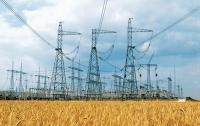
The United States is helping Ukraine investigate last month’s cyberattack last month which disrupted the country’s power grid and left some 80,000 customers without power. Experts say that the 23 December attack against western Ukraine’s Prykarpattyaoblenergo utility was the first known power outage caused by a cyberattack.
-
-
Nepal’s destructive post-earthquake landslides raise parallels for Pacific Northwest
Following the Nepal earthquake — even during the dry season when soils were the most stable — there were tens of thousands of landslides in the region. These landslides caused pervasive damage as they buried towns and people, blocked rivers, and closed roads. Expert estimate that the Nepal earthquake might have caused between 25,000 and 60,000 landslides. The subduction zone earthquake likely to occur in the future of the Pacific Northwest is expected to be larger than the event in Nepal.
-
-
The impact of rising sea levels on Rhode Island
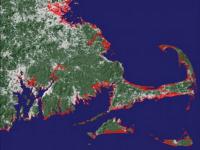
Climate change will bring profound changes to Rhode Island’s coastal communities in the coming decades. Scientists project sea levels to rise 3 to 5 feet in the state by 2100, and recent government projections are as high as 7 feet. Now, University of Rhode Island students are studying one community that could be hit especially hard: Matunuck. The year-long analysis by eight senior ocean engineering students is so thorough that flooding projections were made for specific structures —709 to be exact. Those home and business owners will be able to find out what could happen to their buildings during a powerful storm with rising sea levels up to five feet.
-
-
Toxins found in fracking fluids and wastewater: Study

In an analysis of more than 1,000 chemicals in fluids used in and created by hydraulic fracturing (fracking), researchers found that many of the substances have been linked to reproductive and developmental health problems, and the majority had undetermined toxicity due to insufficient information. The researchers say that further exposure and epidemiological studies are urgently needed to evaluate potential threats to human health from chemicals found in fracking fluids and wastewater created by fracking.
-
-
Gov. Brown declares emergency in wake of massive L.A. natural gas leak
California governor Jerry Brown on Wednesday declared an emergency in a Los Angeles neighborhood where a natural gas well has been spewing record amounts of stinking, global-warming methane gas. Energy experts said the breach at the natural gas storage reservoir, and the subsequent, ongoing release, are the largest known occurrence of its kind.
-
-
Redirected flood waters leading to unintended consequences

An intricate system of basins, channels, and levees called the Headwaters Diversion carries water from the eastern Missouri Ozark Plateau to the Mississippi River south of Cape Girardeau. The system protects 1.2 million acres of agricultural lands from both overflow from the Mississippi River during flooding events and from Ozark Plateau runoff. Climate scientists predict a continued pattern of extreme rainfall events in the upper Mississippi River region, suggesting that unexpected above average rainfall events in the Ohio and Mississippi River basins will continue to increase the frequency of extreme flooding events on these rivers.
-
-
Extreme weather increasingly threatening U.S. power grid
Power outages related to weather take out between $18 billion to $33 billion from the nation’s economy. Analysis of industry data found that these storms are a growing threat to, and the leading cause of outages in, the U.S. electric grid. The past decade saw power outages related to bad weather increase, which means that power companies must find a way address this problem.
-
-
Global electricity production vulnerable to climate change, water resource decline
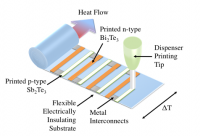
Climate change impacts and associated changes in water resources could lead to reductions in electricity production capacity for more than 60 percent of the power plants worldwide from 2040-2069. A new study calls for a greater focus on adaptation efforts in order to maintain future energy security. Making power plants more efficient and flexible could mitigate much of the decline.
-
-
Making cleaner fuel cells
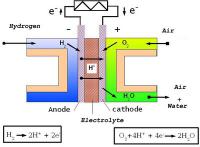
There is a near unanimity in the scientific community that the average temperature on the planet is rising and this is happening because of the increased concentration of carbon dioxide in the atmosphere. Radically redesigning virtually all technological infrastructure is not possible without an acceptable alternative to internal combustion engines: either electric accumulators and electric motors, or fuel cells with electric motors. Fuel cells themselves will not solve the problem of rising temperatures on the planet, but they are part of a possible solution. Researchers have developed ion-exchange synthetic membranes based on amphiphilic compounds that are able to convert the energy of chemical reactions into electrical current.
-
- All
- Regional
- Water
- Biometrics
- Borders/Immig
- Business
- Cybersecurity
- Detection
- Disasters
- Government
- Infrastructure
- International
- Public health
- Public Safety
- Communication interoperabillity
- Emergency services
- Emergency medical services
- Fire
- First response
- IEDs
- Law Enforcement
- Law Enforcement Technology
- Military technology
- Nonlethal weapons
- Nuclear weapons
- Personal protection equipment
- Police
- Notification /alert systems
- Situational awareness
- Weapons systems
- Sci-Tech
- Sector Reports
- Surveillance
- Transportation
Advertising & Marketing: advertise@newswirepubs.com
Editorial: editor@newswirepubs.com
General: info@newswirepubs.com
2010-2011 © News Wire Publications, LLC News Wire Publications, LLC
220 Old Country Road | Suite 200 | Mineola | New York | 11501
Permissions and Policies
Editorial: editor@newswirepubs.com
General: info@newswirepubs.com
2010-2011 © News Wire Publications, LLC News Wire Publications, LLC
220 Old Country Road | Suite 200 | Mineola | New York | 11501
Permissions and Policies
